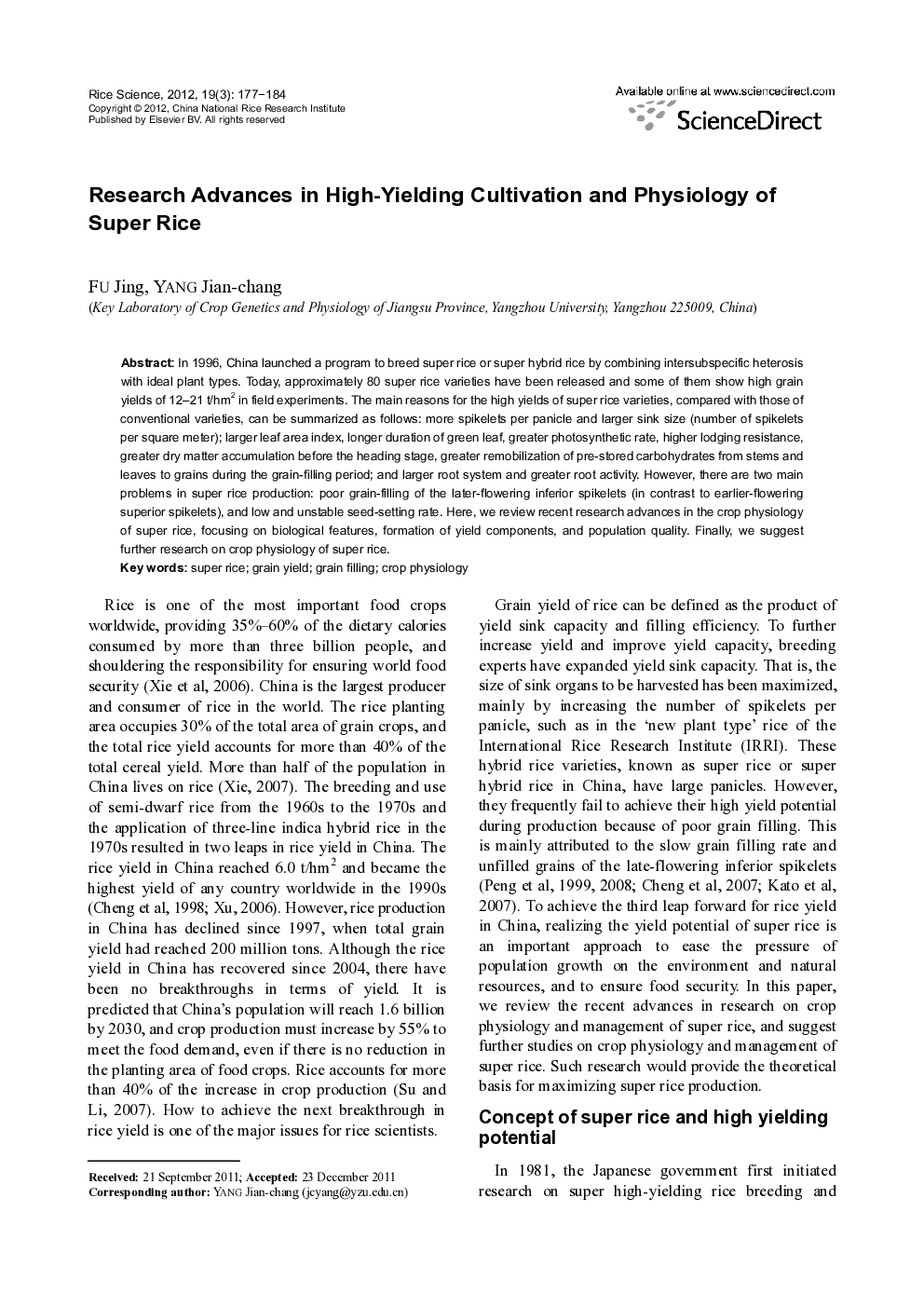| Article ID | Journal | Published Year | Pages | File Type |
|---|---|---|---|---|
| 4502040 | Rice Science | 2012 | 8 Pages |
In 1996, China launched a program to breed super rice or super hybrid rice by combining intersubspecific heterosis with ideal plant types. Today, approximately 80 super rice varieties have been released and some of them show high grain yields of 12–21 t/hm2 in field experiments. The main reasons for the high yields of super rice varieties, compared with those of conventional varieties, can be summarized as follows: more spikelets per panicle and larger sink size (number of spikelets per square meter); larger leaf area index, longer duration of green leaf, greater photosynthetic rate, higher lodging resistance, greater dry matter accumulation before the heading stage, greater remobilization of pre-stored carbohydrates from stems and leaves to grains during the grain-filling period; and larger root system and greater root activity. However, there are two main problems in super rice production: poor grain-filling of the later-flowering inferior spikelets (in contrast to earlier-flowering superior spikelets), and low and unstable seed-setting rate. Here, we review recent research advances in the crop physiology of super rice, focusing on biological features, formation of yield components, and population quality. Finally, we suggest further research on crop physiology of super rice.
